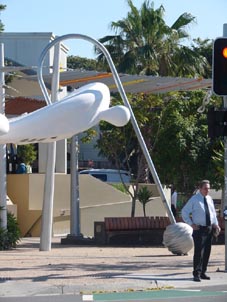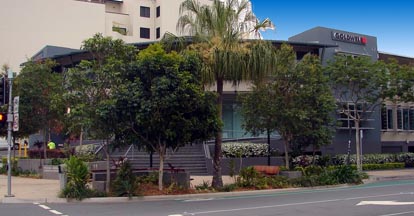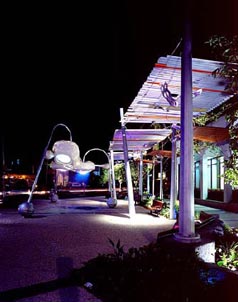The streetscape – sidewalks, trees, benches, cafes, building facades – is the world’s number urban renewal project. How many thousands of miles or kilometers are rebuilt each year to invigorate neighborhoods here, there and almost everywhere? As with all global movements, the differences can be minute. Yet, every city declares their streetscape a strict response to local culture making the space unique to XXXXXX neighborhood.
In addition to whatever visual symbols exist or can be invented locally, nature can make a difference in the palette of the designer. Palms and maple trees are not interchangeable. Within our nowhere mechanically controlled interior environments of the city, the strictly outdoors spaces can be at least geographically distinct.
One zone is the subtropics with humidity, no freeze days and some winter-summer difference that includes summer rain. Most trees and plants are evergreen and many are flowering. Shading by trees and overhangs is essential and nothing should block any cooling breeze. Miami, USA. Brisbane. Australia. Calcutta, India. Okinawa, Japan. Maputo, Mozambique.

City Design, a government agency of the City of Brisbane and Brisbane City Planning under James Coutts’ leadership determined to create that subtropical streetscape with a sustainable attitude. No monoculture tree planting every 30 feet in a pit. Larger planting areas with multiple tree and plant species provide a dense, garden feeling. Benches are shaded by these mini-forests, not sited repetitively as auto-barricades. Stormwater is directed to cisterns for dry day needs.

Canopies, awnings, overhangs and arcades occur in a variety of locations between the building and curb. During the day, a necessary pattern of shade and sun results. A kind of streetscape ceiling emerges made of leaves, canvas, steel and artwork bellies. Lighting is both up and down highlighting the horizontal and suppressing the vertical.

This week I have created a visual essay on the Melbourne Street Subtropical Boulevard in the Southbank district of central Brisbane. The visual essay is at the companion Google site. The artists, Luke Roberts, creator of U.F.O. (Unidentified Flowering Organism) and Andrew MacDonald with Sarah Rayner, creators of the natural forms in aluminum, were inexperienced local artists. It is the general courage of the Queensland Public Art Policy that focuses on local talent rather than national fame and experience. Curators and consultants like Beth Jackson with a positive team from City Design find ways to implement the artist dreams.
More writing will come in the future on the unique response to the subtropical climate in Brisbane and Gold Coast, Australia and elsewhere. Michael Singer’s proposals for Howard Park and the Waterfront in West Palm Beach, Florida, expand these Australian investigations in subtropical North America.
Public Art, Public Space
